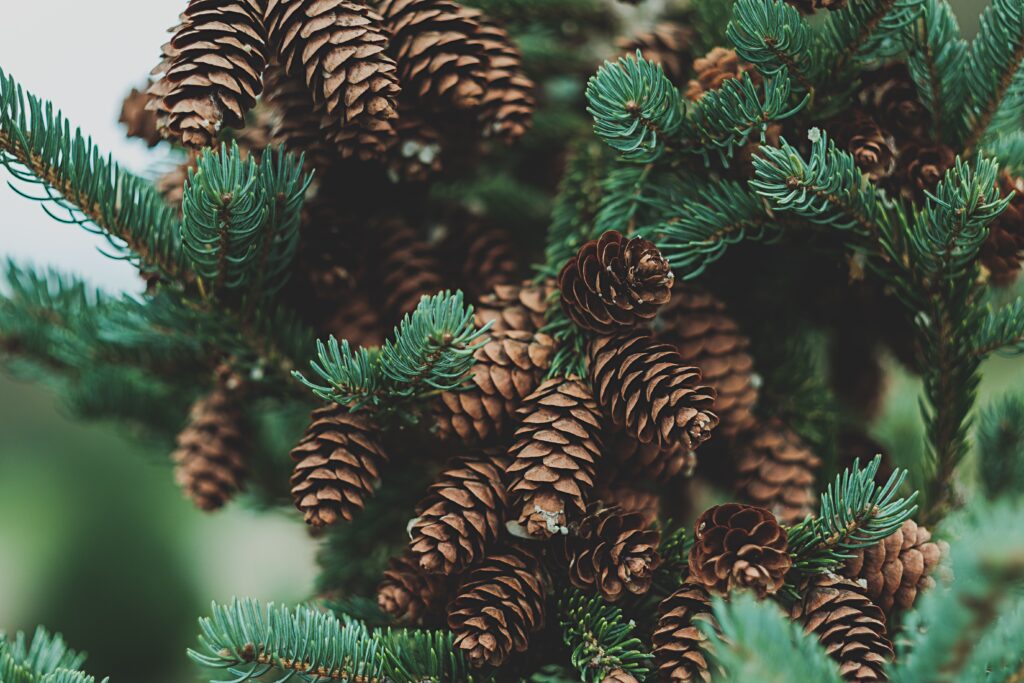Top five uses and benefits of pine
Conifers are plants that bear cones and needle-like leaves. Many of the conifers with which we are most familiar are in the pine family (Pinaceae). This includes cedars, firs, hemlocks, larches, pines and spruces. The family is included in the order Pinales, formerly known as Coniferales.
I love conifers and pines and I think you should too. Read on to find out why:
- They gift us with untold health benefits
- They make a fantastic mulch for our acid-loving plants
- They can save us a fortune when filling up raised beds and planters
- They present opportunities for natural crafting (with and without the kids!)
- They provide shelter for critters in a beautiful bug hotel
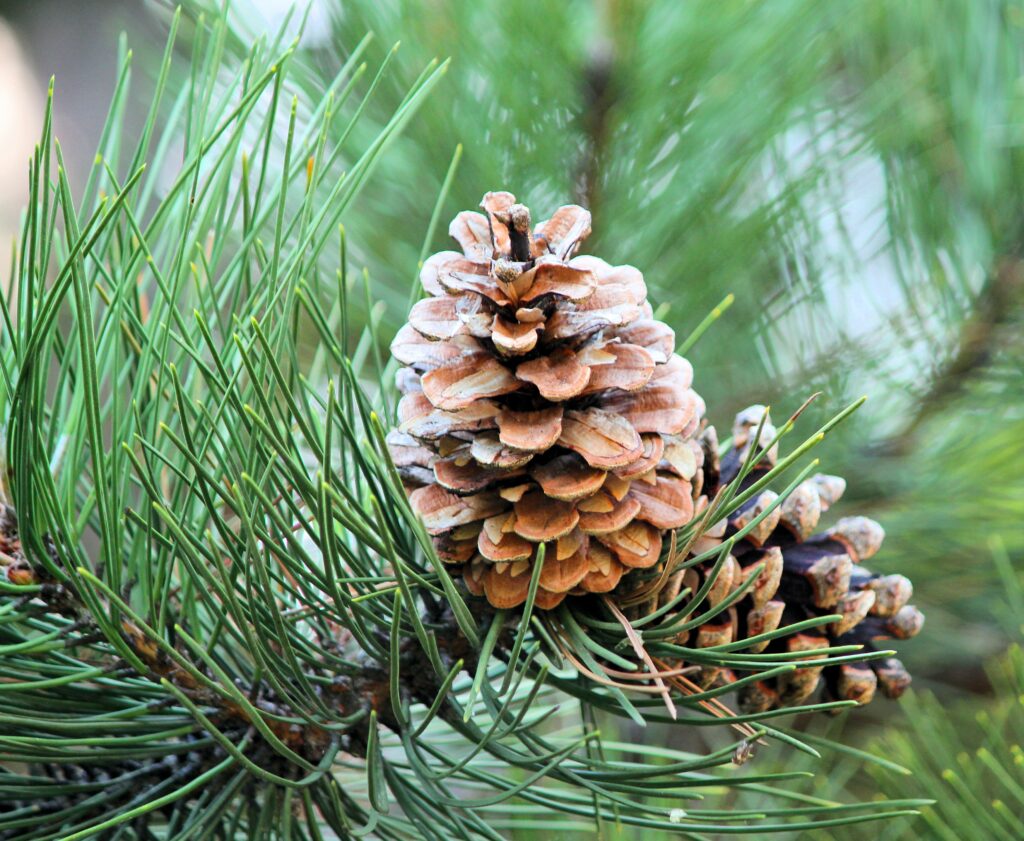
1. The most important of all the benefits of pine – pine trees make us feel better
In addition to all the ways in which pine trees benefit the environment and other natural beings, here are a few different ways in which pine trees are known to benefit human health and wellbeing.
Observing the colour green reduces depression
The crisp chill on a January day might not appeal to everyone yet the powerful feel-good factor of a winter’s woodland walk is undeniable. A coniferous pine tree forest keeps its green colour all year round and natural shades of green are proven to reduce stress and nervousness and alleviate anxiety and depression. And doesn’t watching birds flutter and soar amongst the trees bring us joy? Particularly important in the darker months when seasonal affective disorder can strike.
Fresh air fragrance reduces stress
Inhaling pine extract, a lemony fragrance from a pine tree forest results in a physiological change in our bodies. The tree’s essential oils (phytoncides) trigger an increase in the activity in, and the production of, the white blood cells called NK (natural killer) cells, which are known to fight against viruses and cancer. Breathing in these fresh conifer smells not only fills the lungs with immune-boosting phytoncides but it makes us feel comforted and soothed as well – cortisol levels are lowered and so our stress levels drop.
If you can’t get out into the woods, you can fill your home with their natural fragrance by gathering some fallen-but-green pine needles and boiling them in some water on the hob. You could experiment and add additional scents to the mix, like cinnamon, to complement the smell of pine. I’m already excited about trying this at Christmas (not for long – we have an energy crisis after all!). Bottled essential oils will give similar beneficial effects.
Cup of tea?
Making herbal tea from pine needles has long been thought to bring relief to sinus and lung congestion, and to remedy coughs, colds, allergies, and urinary tract and sinus infections. The fresher, younger needles also contain Vitamin C. Note: this tea works with pine, spruce or fir needles. Ensure you are not picking yew which is another genus altogether and can lead to stomach pains or worse. Read more on how to identify safe plants to make pine needle tea here
Soak up some pine tree benefits in the bath
To best appreciate the benefits of pine trees in the bath, put a few sprigs of fresh shoots in a cloth pouch and drop it into your bath water. Throw them onto the compost once you’re done.
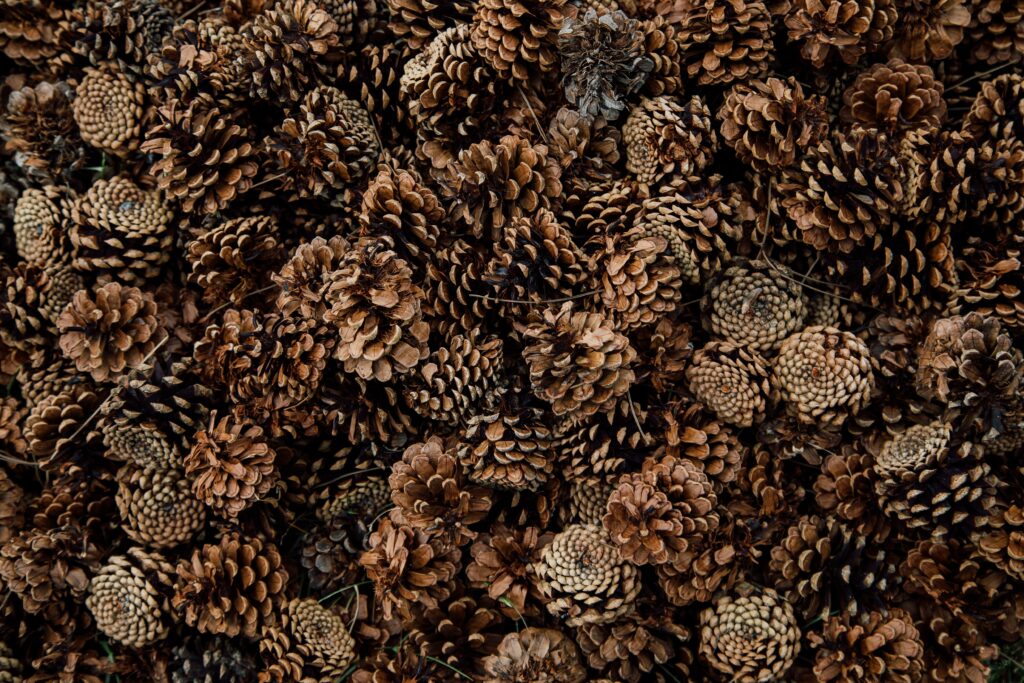
2. A magnificent mulch
As the pine needle mulch decomposes, it provides the soil with calcium, phosphorus, and nitrogen and because the fresh needles are acidic, it also naturally acidifies the soil. Therefore a mulch made from Pine needles and cones will help support and protect plants that grow in acidic environments, like blueberries, rhododendron or azaleas. Spread the mulch around the base of the plant.
3. Fill yer boots (and your other planters)
When I was recently offered some pre-loved large, deep planters my first thought was some precious respite for my back! My mind then turned to how on earth (geddit?) I would fill them, as I remember my neighbour saying the compost for hers had cost an arm and a leg. Yet as most of the roots won’t reach the bottom of the planter it is unnecessary to fill the lower section with expensive compost, and pine needles and cones are the perfect solutions. They are light and easy to manoeuvre and also slow to decompose so will add bulk for the entire season.
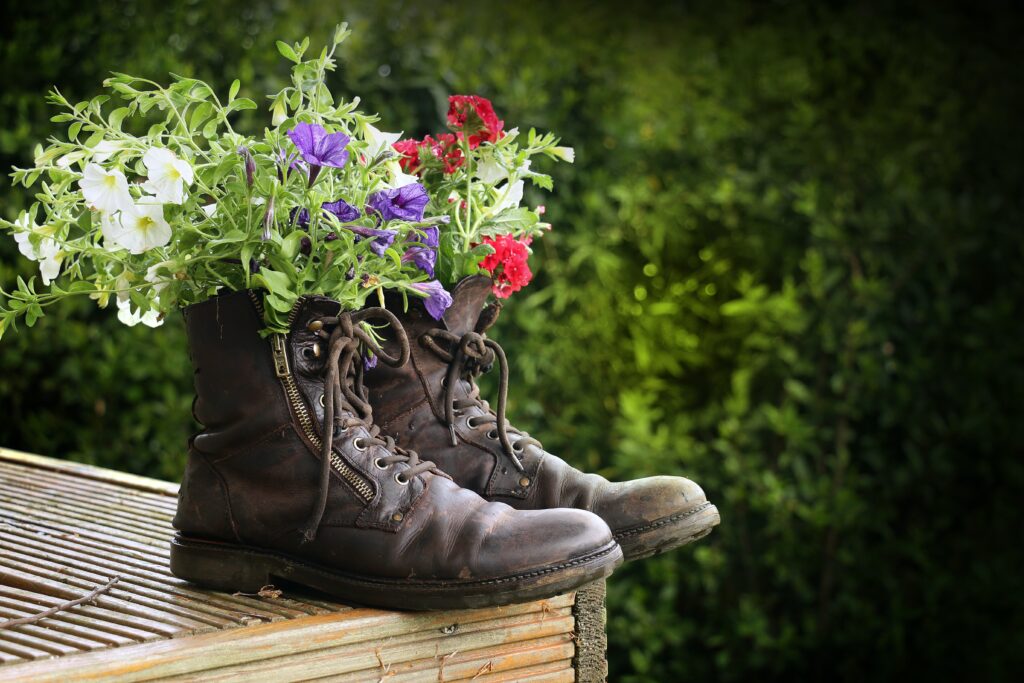
4. Natural crafts… for big and little kids
Pine cones are beautiful. My Dad brought one over from the blue spruce in his front garden a few months ago and we’re still displaying it proudly in the nature corner.
With just a little wire they can be used in autumnal table decorations and Christmas wreath creations for the front door. The fantastic one below was made by Cathryn Whiteside from Basingstoke, Hampshire and you can order yours via her Instagram account. You can also design unique name card holders (Etsy have lots), garlands, fireplace decorations, tree ornaments and centrepiece displays as well as bird feeders. Although that last one comes with a warning as it gets very messy!
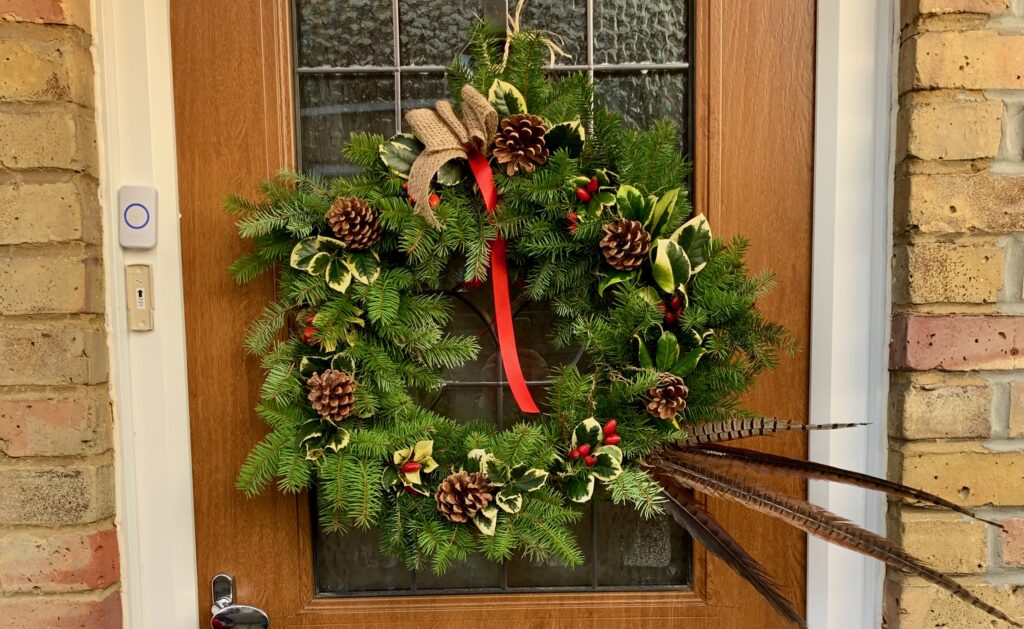
5. Build a bug hotel
As well as being gorgeous and cute, ladybirds are among the most sought-after garden residents. They are voracious hunters and will devour 50+ aphids a day, so you most definitely want to provide shelter to encourage them to stick around. While there are all sorts of scavenged materials you can use to give them a place to nest and hibernate – such as hollow reeds, branches, leaves, bark, and holes drilled in logs – pine cones are an excellent place for ladybirds to settle overwinter. This is also an excellent activity to share with any small people in your life, teaching them from an early age that it’s our responsibility to care for even the smallest creatures in our natural world.
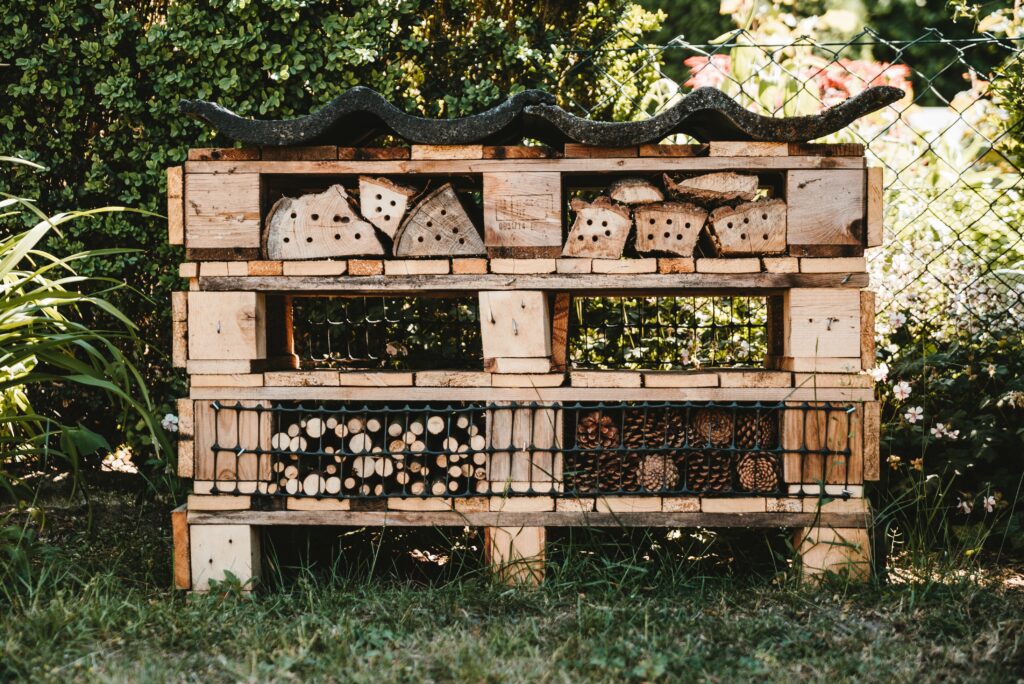
What will you do with your knowledge of the benefits of pine trees?
As a nature lover, I’ve struggled in recent years with what to do for a Christmas tree. I don’t own a plastic one so buying one isn’t an option. I’ve toyed with the idea of a tree that I keep in a pot and wheel inside for a week over the holiday season. And even considered one that you return to the growers’ field. But so far, I’ve always chosen a fresh tree and had the council collect it for recycling in January. But not this year. I shall happily reuse it all myself.
Will you be joining me?

When I lead guided Forest Bathing events in Hampshire, I always make sure the group gets the opportunity to meet with the conifers and pines on site. They do so much for us, not least by producing and cleaning the air we breathe, and I like to bring our focused attention to the exchange of life as we inhale their oxygen and produce carbon dioxide for them in return. If you’d like to try out some guided Forest Bathing (totally different to your average walk in the woods) then you can find out more here.
I’ve also written a series of blogs for those who prefer a greater depth of understanding, starting with What is Forest Bathing here.
